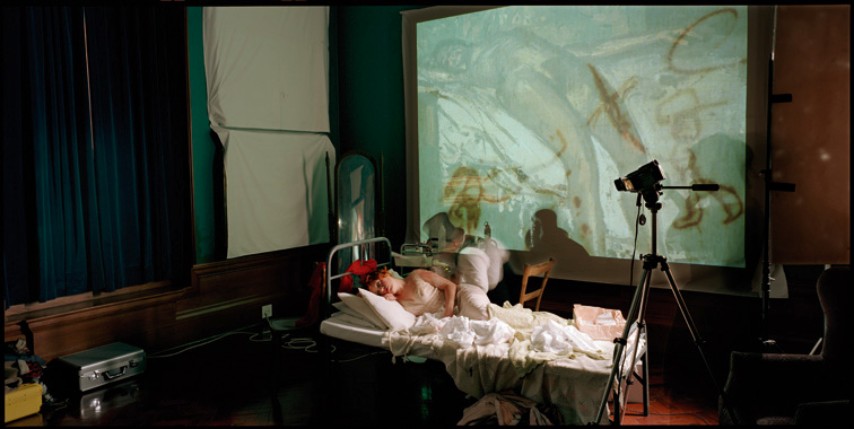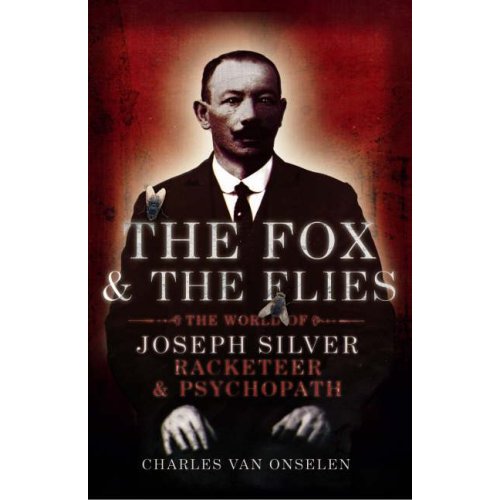Jack in Johannesburg (and elsewhere)

Jack in Johannesburg
(production still) 2003
Jack in Johannesburg (and elsewhere): after a public performance
2003 - 2004
DVD, with audio
Jack in Johannesburg (and elsewhere) is an impressionistic video piece comprising audio and visual montages created from the documentation of a public, site-responsive performance Jack in Johannesburg (Johannesburg Art Gallery, 2003). It reworks original and found material into a collection of episodic musings on desire; identity, biography and alter-ego; artistry versus art history; and the meeting of reality, fiction and fantasy. It also functions as something of an oblique response to Johannesburg’s reputation for violent crime, bringing the colonial past and the democratic present into a close and discomfiting relationship through the figure of British painter Walter Sickert.
This film
continues my ongoing research into complexes of art and
criminal practice. It takes its cue from an obscure text called 'Sickert and the Ripper Murders' (1990/2001) by Jean Overton Fuller, in which claims are made to link Sickert to the Ripper case. This theory was resurrected by popular crime fiction writer Patricia Cornwell with the publication of her 'Portrait of a Killer: Jack the Ripper, Case Closed' (2002), in which she confidently fingers Sickert as the Ripper himself, albeit with no reference to the original Fuller text. These texts are amusing, and informative in their way.
The model for the modern serial or ‘signature’ killer, driven by intense visual fantasies, desire and process, Jack the Ripper himself allegedly claimed to have ‘given birth to the twentieth century’; in other words, modernity as we know it. But the subject of the Ripper – a sensational figure who has become something of a literary genre unto himself – is a MacGuffin. Sickert's position in this history is most interesting, but not as chief protagonist in one of the most wildly open-ended stories of modern life. Rather, it is a question of imagined identification. His fascination with the murders is well-documented, he made explicit reference to the case in a number of works, and at the very least, he inserted himself into these events as the alleged author of several ‘Ripper’ letters received by police at the time.
A ghost of British colonial history in South Africa, Sickert’s work can be found in most public
museum collections. This performance took place in the Lutyens room of the Johannesburg Art Gallery in front of Sickert's painting 'The Pork Pie Hat', and works by members of the British School, as part of an experimental residency programme facilitated by Christian Nerf. The film was a central work in my exhibition, Euphemism, which incorporated works by Sickert selected from the permanent collection of each museum venue to which the exhibition travelled.
In his catalogue essay for Euphemism, Colin Richards describes the performance thus:
“The barely believable light; copperish, cold... sunshine dimly through glass, the internal, artificial light, the flashes of those who document gore - leached of sanguinity to be honest - with studied indifference, professionals. All very cool and temperate. Obsessive, laconic. The rather wonderful twisting and turning of the ‘real’ and the projector’s reel. The click of that machine, ambient noise, footsteps, whispers and murmurs, silent gazes... An exaggerated costume drama of a moment out of step, out of time. But still now. The space a vaulting mausoleum in a museum mise en abyme. The staged scene and the action... slow comings and goings (talking of Michelangelo?), the supine violence on the body frozen in the tepid atmospherics of wrapped pictures and the fuzzy ferocity of lions and lambs... And then the sense of a somnambulists’ ball, a social séance (a la Paul Delvaux). The tractable but tenacious coincidence of London’s sicker East End, and the east end of this city centre. The railway rift valley outside where people sit, shit, sun... The artistic misogynist (Jack) and the misogynist artist (Sickert). A faint air of listless decay, Leopold von Sacher-Masoch and the Marquis de Sade hanging about... A bit like the overwrought, voluptuous Jacques-Louis David’s Death of Marat, for Baudelaire the secular pietà of the modern age... bits and pieces of other things... So, beautiful in its way.”
Performance
originally shot on digital video by Daron Chatz and Jahmil XT Qubeka
Additional footage shot by Kathryn Smith during ‘Ripping Yarns’ tour, London, with the kind permission of Allen Evershed. Found footage and audio sourced from Jack the Ripper (1988, mini series dir. David Wickes); From Hell (2001, dir. Hughes Brothers); The Secret Identity of Jack the Ripper (1988, documentary, dir. Louis J. Horvitz and Mike Mathis); and Rope (1948, dir. Alfred Hitchcock).
Live jazz accompaniment for the performance by Edith Klug and Johnny Fourie.
Update:
In 2007, acclaimed South African biographer Charles van Onselen
published his remarkable social history, 'The Fox & The Flies: The
World of Joseph Silver, Racketeer & Psychopath'.
A Polish
immigrant and one of the turn of the last century's most violent
criminals, Joseph Silver's dark trade saw him active in Europe, North and South
America and southern Africa, including some years in London's East End
between 1885 and 1889, and again from 1895 to 1898, when he relocated to
Johannesburg.
As Van Onselen's research indicates, Jack may very well
have been in Johannesburg after all.
